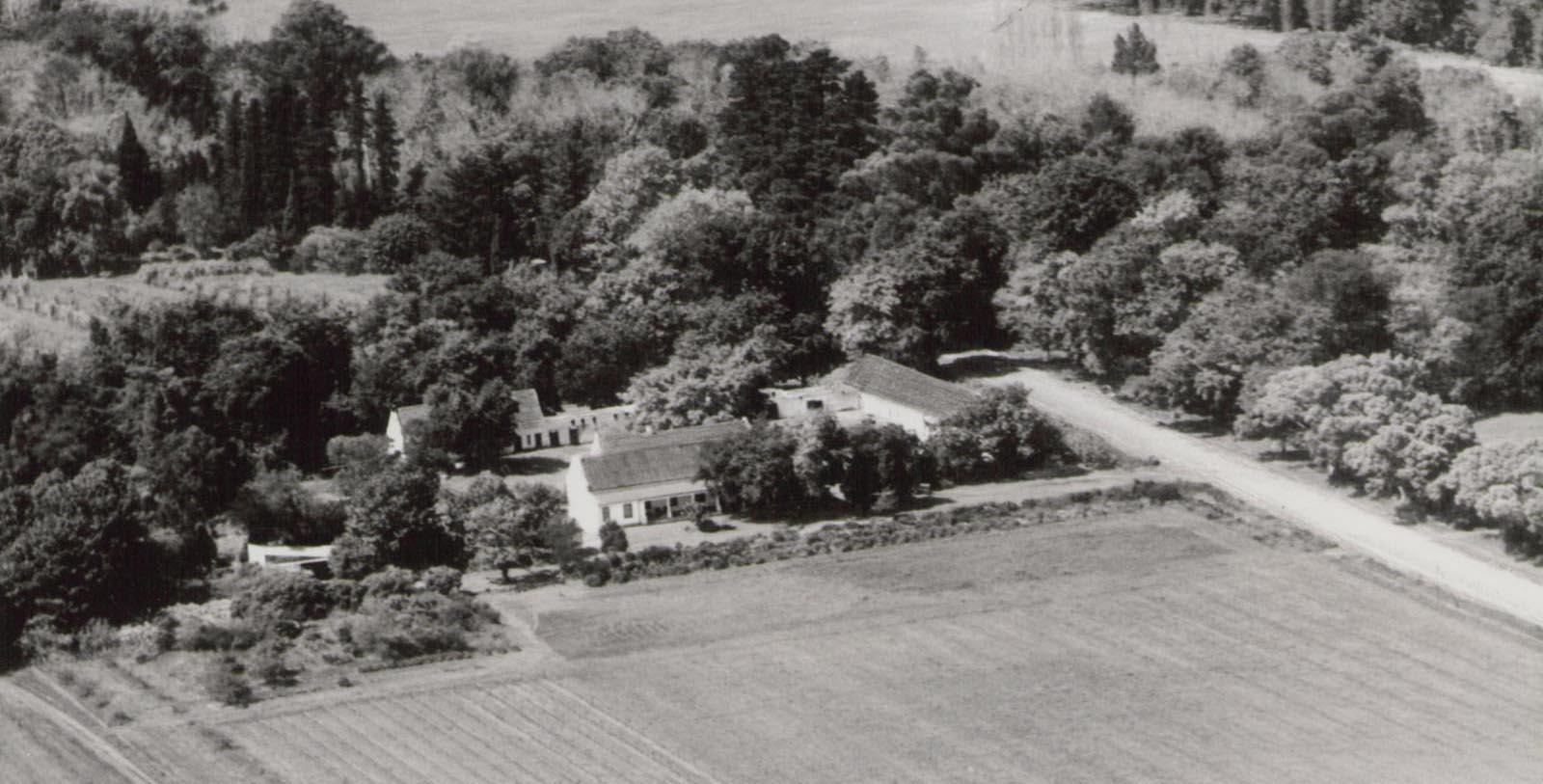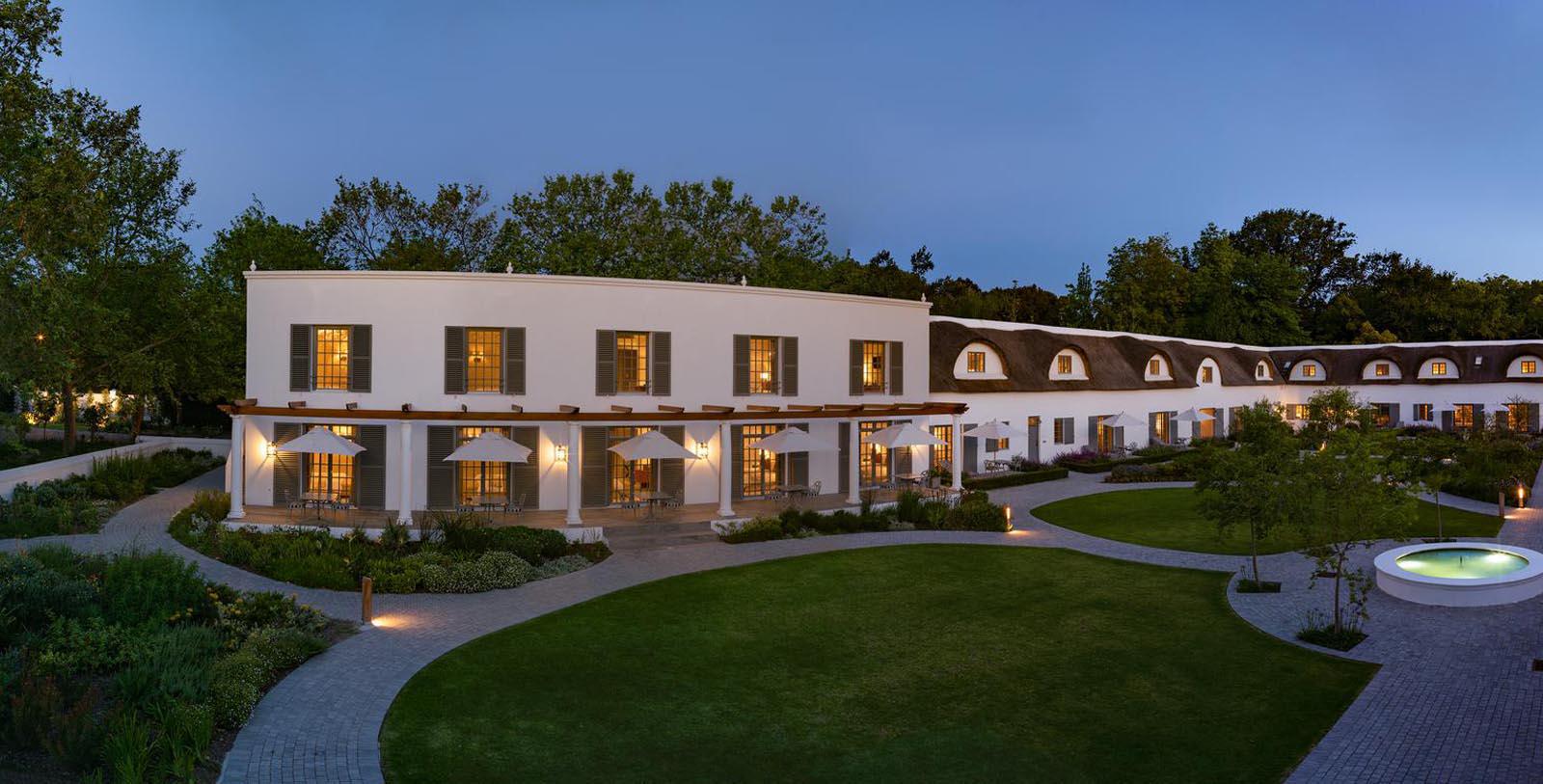Receive for Free - Discover & Explore eNewsletter monthly with advance notice of special offers, packages, and insider savings from 10% - 30% off Best Available Rates at selected hotels.
history
Discover the Erinvale Estate Hotel & Spa, which was once part of an estate when South Africa was a Dutch colony in the 17th century.
Erinvale Estate Hotel & Spa, a member of Historic Hotels Worldwide since 2018, dates back to the 1660s.
VIEW TIMELINEThe history of the Erinvale Estate Hotel & Spa originates from a landholding owned by Willem Adriaan van der Stel during the mid-1660s. Stel had acquired the estate shortly after assuming the role of governor for the nascent Dutch Colony of Cape Town. In a matter of months, Stel’s massive homestead wound up producing a vast majority of the settlement’s food supply. The virtual monopoly that he controlled over the colony’s resources doomed his status as the colony’s governor, though. A coalition of wealthy settlers eventually expelled him from Cape Town on charges of corruption the early 18th century. Stel’s estate was subsequently divided by the remaining colonial authorities in the wake of his exile. The portion of the farm on which the Erinvale now currently resides was renamed “Welgelegen,” and became a vineyard for many years thereafter. The building that now constitutes the hotel came into existence when the affluent Munnik family constructed its first iteration in 1817. Nevertheless, the structure did not receive the name Erinvale until Edward Strangman purchased the estate some fifty years later. (Strangman was a transplanted Irishman who changed the name of the farm to “Erin Vale” in honor of his homeland.) Both Strangman and his descendants would live on this marvelous estate for the next 113 years. Three different generations of the family specifically owned Erinvale, with Edward Strangman’s granddaughters—Doreen and Kathleen—being the last to call the grand estate home. It was amid their stewardship that the original farmhouse received a thorough renovation. When the project concluded during the 1950s, Erinvale assumed its present appearance. Peter Baragwanath then acquired Erinvale from Peter Gant in 1994, who had obtained the building a decade prior. He then proceeded to transform the homestead into a luxurious resort. But another Irishman would soon own the location, as Baragwanath sold it to Kerry County native (and enterprising business tycoon) Xavier McAuliffe four years later. Under McAuliffe, Erinvale quickly developed a strong international reputation for its remarkable service and world-class facilities. Under new ownership today, the Erinvale Estate Hotel & Spa continues to serve as one of South Africa’s most luxurious holiday destinations.
-
About the Location +
Located in the verdant Hottentots-Holland valley, Erinvale Estate Hotel and Spa is just a short drive away from the vibrant metropolis of Cape Town. This magnificent destination also has a fascinating history that cultural heritage travelers will find interesting. The earliest known inhabitants of the region were the indigenous Khoe, nomadic cattle herders better remembered today as the “Hottentots.” But numerous European mariners eventually joined the Khoe, starting with the arrival of Portuguese navigator António de Saldanha in 1503. The sailors were attracted to the area due to its natural harbor and lush countryside, which offered plentiful supplies and shelter. In fact, one group of shipwrecked sailors from the Dutch vessel Haerlem spoke glowingly about the location upon being rescued in 1647. Acting on their recommendations, the Dutch subsequently decided to construct a small outpost that could service their own merchant fleet heading further west toward Asia. Thus in 1652, Jan van Riebeeck of the Dutch East India Company finally landed on the shores of outlying Table Bay and began constructing a stronghold that he called the “Fort de Goede Hoop.” A settlement grew around the base over the next several years, driven by the immigration of additional company employees throughout the 1650s and 1660s. The Dutch soon built townhouses around the fort, as well as sprawling manors in the fields beyond the town. The community gradually became the center of a prosperous Dutch colony known as “Cape Colony,” with the settlement emerging as a thriving international port. Visiting mariners gradually referred to the village as “Cape Town,” too, which the locals adopted as the permanent name.
Cape Town remained the administrative center for Cape Colony well into the 19th century, even after the Dutch formally ceded the region to the British in the wake of the Napoleonic Wars. (The British had seized the region during the latter stages of the conflict, as the Netherlands were aligned closely with French Emperor Napoleon Bonaparte at the time.) Cape Town has also grown to the size of an actual city, with its population numbering close to 200,000 at the height of the Gilded Age. While the city remained prosperous, it nonetheless failed to generate the same kind of industrialization that occurred in the rival cities of Pretoria and Johannesburg. In fact, those two communities had economically eclipsed Cape Town by the time the modern nation of South Africa first formed in 1910. Nevertheless, Cape Town continued to be a politically important city among South Africans for generations thereafter. Today, Cape Town remains an incredibly prestigious community in the country, serving as the contemporary home for the Parliament of South Africa. It has also created a reputation as an incredibly popular tourist destination, especially among cultural heritage travelers. The city is now the site for many fascinating attractions that chronicle South African history, including the Castle of Good Hope, the Bo-Kapp Museum, and the V&A Waterfront. But Cape Town is near dozens more locations as well, such as Table Mountain National Park, the Kirstenbosch National Botanical Garden, and the world-famous Cape Winelands region.
-
About the Architecture +
Erinvale Estate Hotel and Spa stands as a wonderful iteration of Cape Dutch architecture. Most commonly seen in the communities surrounding the Western Cape today, Cape Dutch style can trace its origins back to the founding of Cape Colony in the 17th century. When the first European settlers arrived as part of the Dutch East India Company, they created numerous dwellings that used architectural motifs found back home in the Netherlands. Indeed, many of the farmhouses and manors that dotted the local countryside relied upon design aesthetics associated with the townhouses that lined Amsterdam’s iconic canals. But the colonists also borrowed inspiration from residences seen in the Dutch province of Friesland, which had traditionally featured architectural elements observed in buildings throughout northern Germany. Nevertheless, the style of house that the earliest Dutch inhabitants had created involved a number of similar principles that gradually coalesced into a specific style. Homes built in the Cape Dutch form were ultimately set upon elongated foundations, which—at most—stood two feet in height. They were subsequently encased inside limewashed brick walls and thatched roofing. The exteriors were decorated with numerous wooden features, too, including sash cottage panes and external shutters that covered gorgeous dormer windows. Perhaps the most stunning feature was the central gable—a normal component for any house that mimicked traditional Dutch architecture. Over time, the Cape Dutch structure helped grant the Western Cape its own special cultural identity. In fact, the architecture had become so intertwined into the character of the area that many residents even attempted to revitalize the style in the late 19th and early 20th centuries. While most of the original houses and manors that displayed Cape Dutch architecture no longer survive, a few fantastic examples do still exist across the region today. Some of the best houses constructed in Dutch Cape from the period specifically exist in towns like Stellenbosch, Swellendam, and Tulbagh, as well as along the Western Cape’s famed Wine Route.


























